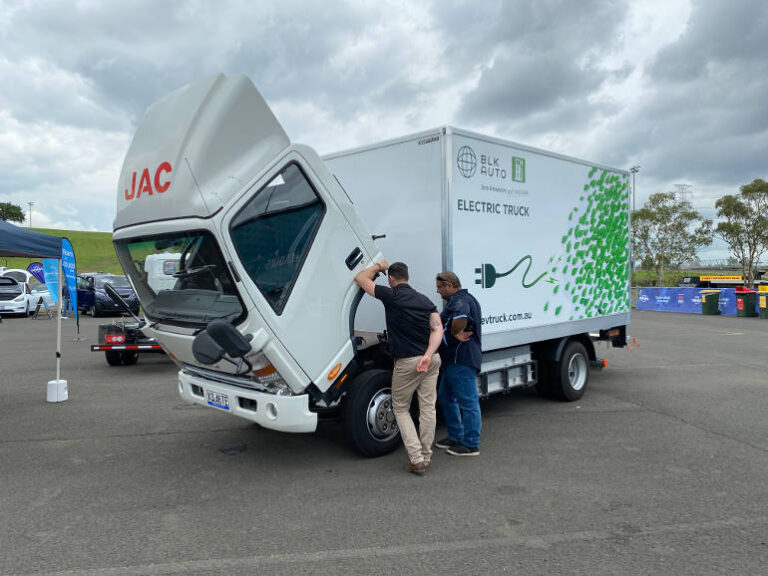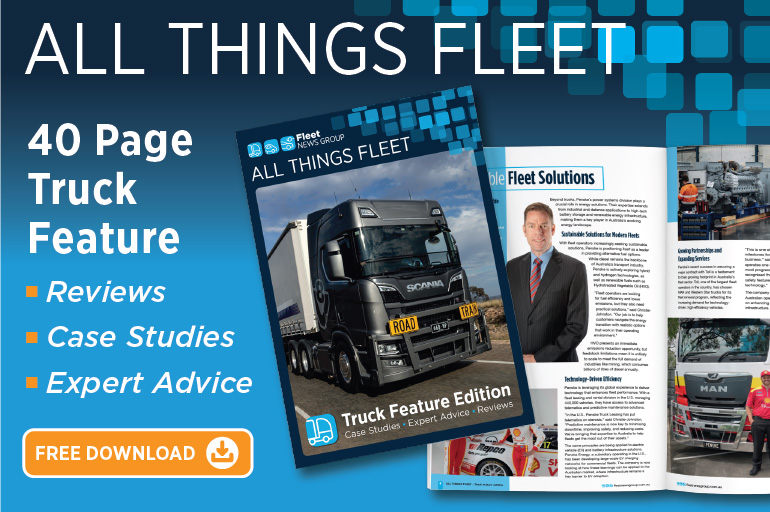As the transition to zero-emission transport accelerates, more electric trucks are now commercially available in Australia — particularly in the light commercial and rigid categories. This guide lists battery electric trucks currently on the market, helping fleet managers identify models suitable for urban, regional and long-haul freight operations.
Light Commercial Electric Vehicles (LCVs)
Best suited for: Urban freight, last-mile delivery, depot-based operations
| Make & Model | Body Type | Battery Size (kWh) |
|---|---|---|
| LDV eT60 | Ute | 88.5 |
| Ford F-150 Lightning | Ute | 98 or 131 |
| BYD Shark 6 | Ute | 80 |
| LDV eDeliver 9 | Van | 77 or 88 |
| Mercedes-Benz EQV | Van | 90 |
| Mercedes-Benz eVito | Van | 85 |
| Peugeot e-Partner | Van | 50 |
| Peugeot e-Expert | Van | 75 |
| Renault Kangoo E-Tech | Van | 33 |
| BYD T3 | Van | 50.3 |
| ACE Cargo Light | Van | 23.2 |
| EC11 | Van | 73.6 |
| SEA E4V | Van | 88 |
Rigid Electric Trucks
Best suited for: Urban and short regional freight, council and service fleets
| Make & Model | Body Type | Battery Size (kWh) |
|---|---|---|
| Volvo FE | Medium Rigid | 280–375 |
| Volvo FL | Light Rigid | 280–375 |
| Volvo FMX | Heavy Rigid | 450–540 |
| Mercedes eActros 300 | Heavy Rigid | 336 |
| Mercedes eEconic | Heavy Rigid | 336 |
| SEA 300EV | Medium Rigid | 138 |
| SEA 500EV | Heavy Rigid | 280 |
| Fuso eCanter (all configs) | Rigid | 41.3–124 |
| Hyundai Mighty Electric | Light Rigid | 115 |
| Scania 25P | Heavy Rigid | 165 |
| JAC N55 / N75 / N90 | Rigid | 97–107 |
| Foton T5 | Light Rigid | 81 |
Articulated Electric Trucks (Long-Haul)
Best suited for: Interstate and intrastate hub-to-hub freight
(Currently limited, with growth expected in coming years)
| Make & Model | Configuration | Battery Size (kWh) |
|---|---|---|
| Volvo FH Electric | Articulated | 450–540 |
| Volvo FH Aero Electric | Articulated | 450–540 |
| JANUS Kenworth T403 (conversion) | Articulated | 600 |
Buying Tips for Fleet Managers
- Start with urban delivery tasks: Vehicles in the LCV and rigid categories can be deployed now with overnight charging at depots or shared hubs.
- Plan for infrastructure: Identify depot capacity or explore public/third-party charging options to support BEV operations.
- Track vehicle cycles: Align BEV purchases with natural fleet replacement to reduce capital disruption.
- Consider resale market: Choose models with growing market support and service networks to retain long-term value.
This guide reflects the available BEV trucks as of 2024. As the market evolves, new models with greater range, payload capacity and charging speeds will open further opportunities — particularly for regional and long-haul freight.
Click here to download a copy to include in a Fleet Transition Plan.







